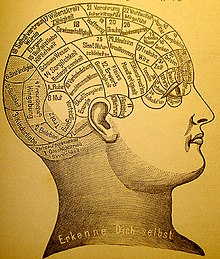මනස

මෙම ලිපිය හො එහි ඇතැම් කොටස් ඉංග්රීසි ලිපියක කටු පරිවර්තනයකි. මෙය පරිගණකයක් මගින් ජනනය කල පරිවර්තනයක් හෝ භාෂා දෙකෙහි ප්රවීනත්වය අඩු තැනැත්තෙකු හෝ තැනැත්නන් විසින් සිදුකරන ලද ඒවා විය හැක. (2015 සැප්තැම්බර්) |
බුදු දහමට අනුව මනස යනු
[සංස්කරණය]What is mind in Buddhism
Mind is defined in Buddhism as a non-physical phenomenon which perceives, thinks, recognises, experiences and reacts to the environment.
The mind is described as having two main aspects: clarity and knowing; meaning that the mind is clear, formless and allows for objects to arise in it, and that the mind is knowing, an awareness, a consciousness which can engage with objects.
Mind is a phenonmenon that is not body, not substantial, has no form, no shape, no color, but, like a mirror, can clearly reflect objects."
"In Pali, heart and mind are combined to be one word called Citta, but in English, it is differentiated between the heart and the mind to make more clear meaning as explanation below:
Mind is concerned with the thinking process and the intellectual understanding that derives from knowledge, and with mind, it can retain knowledge ability and make use of it.
Heart is concerned with emotions process, which being our ability to respond with our fundamental being.
Although we may believe that we are leading our lives according to our thinking process, that is not the case. If we examine this more closely, we will find that we are leading our lives according to our feelings and that our thinking is dependent upon our feelings.
The emotional aspect of ourselves is great importance because it is the basis for a harmonious and peaceful life, and also for good meditation result if we can make mind pure from emotional.
බුදු දහමේ මනස කුමක්ද?
මනස බුද්ධාගමේ අර්ථ නිරූපණය, සිතන, හඳුනා ගන්නා, අත්දැකීම් සහ පරිසරයට ප්රතික්රියා කරන භෞතික ප්රපංචයක් ලෙස අර්ථ දක්වා ඇත.
මනස විස්තර කෙරෙන්නේ ප්රධාන අංග දෙකක් ලෙසය: පැහැදිලි භාවය සහ දැනගැනීම; මනස පැහැදිලිය, නිර්වස්ත්ර නොවන බවත්, වස්තූන් හට ඇති දේ වලට ඉඩ සලසන බවත්, මනස දැන, දැනුවත්කමක්, වස්තූන් සමග සම්බන්ධ විය හැකි සංඥාවක් බවය.
මනස යනු ශරීරයක් නොවන සංඝටකයක් වන අතර සැලකිය යුතු නොවේ, කිසිදු ආකාරයක හෝ හැඩයකින් තොරව, නමුත් කැඩපතක් වැනි දෑ පැහැදිලිව පිළිබිඹු කළ හැකි ය.
"පාලි භාෂාවෙන්, හෘදයේ හා මනස සංඛා නමින් හැඳින්වෙන එක් වචනයක් ලෙසට එකතු වී ඇත. නමුත් ඉංග්රීසි භාෂාවෙන් පහත සඳහන් කරුණු පැහැදිලි ලෙස අර්ථ දැක්වීමට හදවත සහ මනස අතර වෙනස ඇත.
මනස සිතීමේ ක්රියාවලිය හා දැනුමෙන් උපුටා ගන්නා බුද්ධිමය අවබෝධය ගැන සැලකිලිමත් වන අතර, මනසින්, එය දැනුමෙන් රඳවා තබා ගත හැකි අතර එය භාවිතා කිරීමද කළ හැකිය.
හෘදයේ හැඟීම් ක්රියාවලිය ගැන සැලකිලිමත් වන අතර, අපගේ මූලික දේ සමග ප්රතිචාර දැක්වීමට අපට ඇති හැකියාවයි.
අපගේ චින්තන ක්රියාවලිය අනුව අප අපේ ජීවිතයට නායකත්වය දෙන බව විශ්වාස කළ හැකි නමුත් එය එසේ නොවේ. අපි මෙය වඩාත් සමීපව විමසා බැලුවහොත්, අපගේ හැඟීම්වලට අනුව අප අපගේ ජීවිත හැඩගස්වන අතර අපගේ චින්තනය අපගේ හැඟීම් මත රඳා පවතී.
අපට හැඟීම්බර සහ සාමකාමි ජීවිතයක් උදෙසා වන අතර, මානසික හැගීම් වලින් පිරිසිදු මනසක් ඇති කරගත හැකි නම් හොඳ භාවනාත්මක ප්රතිඵලයක් සඳහාද එය අපට වැදගත් වේ.
අමතර අවධානයට
[සංස්කරණය]- Outline of human intelligence – topic tree presenting the traits, capacities, models, and research fields of human intelligence, and more.
- Outline of thought – topic tree that identifies many types of thoughts, types of thinking, aspects of thought, related fields, and more.
- Embodied cognition
මූලාශ්ර
[සංස්කරණය]- ^ Oliver Elbs 2005, Neuro-Esthetics: Mapological foundations and applications (Map 2003), Munich.
භාහිර සබැඳි
[සංස්කරණය] Mind ගැන තවත් දේ විකිපිඩියා සහෝදර ව්යාපෘති හරහා සොයාගන්න
| |
| වික්ෂනරිය වෙතින් අර්ථ දැක්වීම් | |
| කොමන්ස් වෙතින් ඡායාරූප හා මාධ්ය | |
| විකිසරසවිය වෙතින් ඉගෙනුම් මූලාශ්ර | |
| විකිපුවත් වෙතින් පුවත් කථාංග | |
| විකිකියමන් වෙතින් උපුටා දැක්වීම් | |
| විකිප්රභව වෙතින් ප්රභව පෙළ | |
| විකිපොත් වෙතින් පෙළපොත් | |
- Broad, C.D. (1925). Mind and its place in nature. New York: Harcourt, Brace & Company, Inc. සම්ප්රවේශය 7 July 2016.
